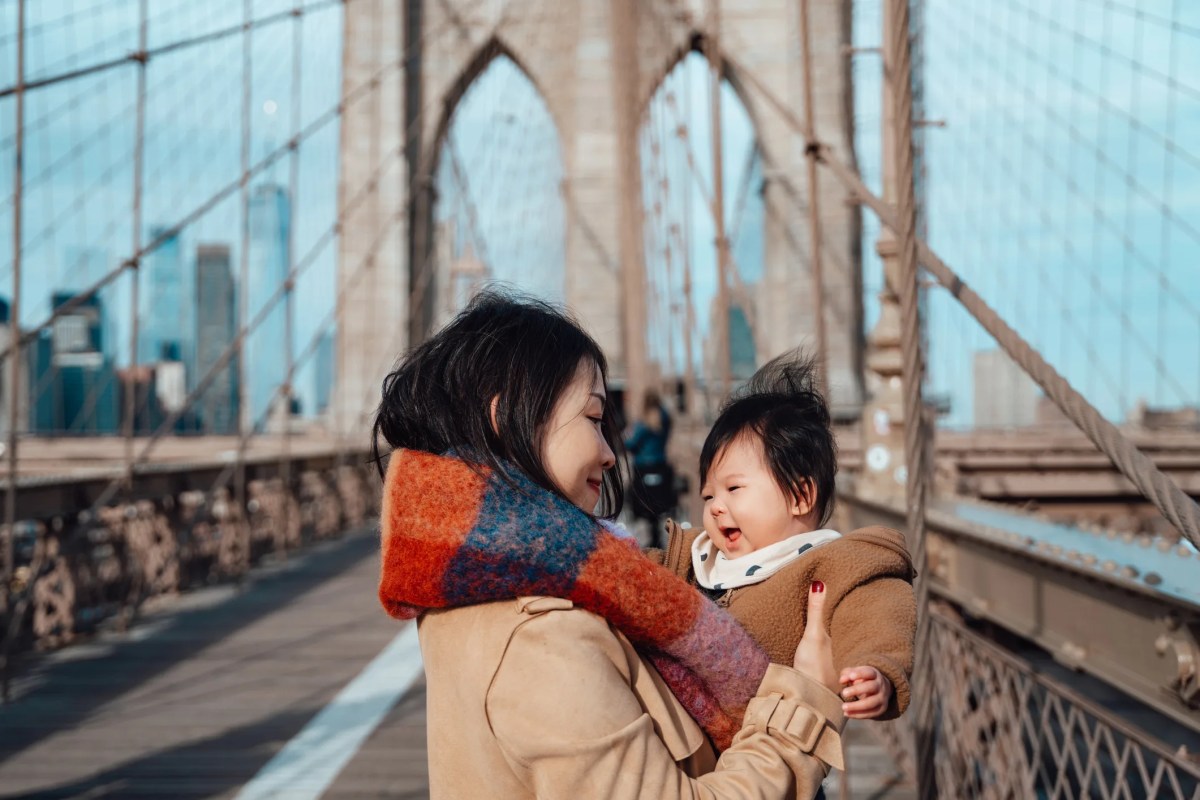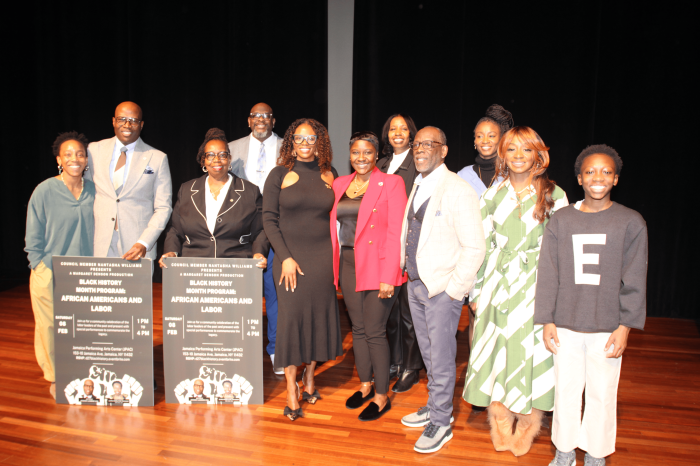
Many of Manhattan’s 80 or so neighborhoods are filled with rich history and hundreds of years of experience. But there exists no place in the city with a deeper connection to its roots than the South Street Seaport District. Despite a sometimes-rocky existence, the area is quickly becoming one of the most vibrant in New York, with the biggest names in food and retail racing to set up shop.
The area has seen openings from major retailers like Abercrombie & Fitch, Roberto Cavalli and Cynthia Rowley, plus the first retail outpost of SJP by Sarah Jessica Parker, and the district’s first boutique hotel, the 66-room Mr. C Seaport. Popular food chains like by CHLOE have also landed there, and the trendy Big Gay Ice Cream chose the neighborhood for its fourth location in October.
The big-name brands have signed on to a vision promoted by Seaport owner the Howard Hughes Corporation that seeks to redefine the district and persuade New Yorkers to give it a fresh chance.

400 years of history
With its cobbled streets and 18th-century buildings, it is impossible to walk through the Seaport without being immediately transported to yesteryear.
Situated just at the tip of lower Manhattan, alongside the East River, the neighborhood traces its history to the 17th century, when it was a key outpost for the Dutch West India Company. By the mid-1800s, South Street Seaport was a round-the-clock commercial hub and home to the Fulton Fish Market, which would soon become one of America’s busiest.
The district remained a vibrant business center through the turn of the century, but by the 1930s, the seaport became too shallow for most new ships, which instead began docking on the West Side and in Hoboken. By the late 1950s, Piers 15, 16, and 17 were almost completely vacant.
A saving grace for the then-moribund neighborhood came in 1967 in the form of the South Street Seaport Museum, and in 1982redevelopment led to the openingof modern shopping spaces. The Fulton Fish Market building soon became a shopping mall, and Pier 17’s old structure was demolished and replaced in 1983 with a new glass pavilion.
The development of the Seaport from the late ’60s through the ’80s was largely done under the intention of preserving a line of buildings on its Schermerhorn Row, which were threatened by neglect ornew construction. Thepreservation efforts have left the South Street Seaport as one of only a handful of places in the city with original buildings and streets still intact.

Superstorm Sandy strikes
Despite the neighborhood’s transformation into somewhat of a tourist-trapping strip mall in the 1990s and early 2000s, the Seaport continued to draw large crowds and financial success. But the tragedy of 9/11, which took place just a few blocks north, struck the area hard, and the nationwide economic recession, which more or less began in the neighboring Financial District, didn’t help matters. Finally, the South Street Seaport was besieged by 2012’s superstorm Sandy.
Sandy left the area severely damaged and with up to seven feet of flooding in some places. The destruction forced an end to the museum’s lucrative plans to merge with the Museum of the City of New York, many of the neighborhood’s businesses were forced to close, and those that remained suffered from the loss of customers after the storm.
The South Street Seaport Museum re-opened its doors in December 2012, just a few months after superstorm Sandy, and the Howard Hughes Corporation announced its plans to revitalize the district soon after.

A buzzy revival
In the midst of the South Street Seaport’s post-Sandy wreckage, the Howard Hughes Corporation decided that, as part of a larger redevelopment of the area, it would tear down the neighborhood’s principle shopping area, Pier 17, and build in its place a new pier with restaurants, shops and a rooftop events venue.
“After superstorm Sandy, it was important that we invite New Yorkers back to Pier 17 to reclaim their relationship with this iconic waterfront,” says Saul Scherl, president of the developer’s New York Tri-State region. “By thoughtfully curating an array of unique experiences that span retail, culinary, fashion and entertainment—the antithesis of a predictable mall experience—we are establishing a new creative hub, encouraging visitors to continuously rediscover the Seaport and all it has to offer.”
Big Gay Ice Cream co-owner Doug Quint said he was pleasantly surprised at the renewed appeal of the Seaport District.
“I’ve lived in New York since 1989, and I remember going to South Seaport and hating it,” Quint said. “I always thought, why would I ever come back here?” But upon further investigation, he and partner Bryan Petroff discovered that the Seaport District was “really happening” and eventually found inspiration in its proximity to the water for the “seaside ice cream right off the boardwalk” feel of their new store.
South Street Seaport is additionally now home to the first American location of 10 Corso Como, the popular dining and shopping concept pioneered by Carla Sozzani in Milan, and the neighborhood was a large factor in her decision to open in New York.

“Carla was attracted to its rich history and the history of the Fulton Market Building as one of the first places in the city where goods were traded,” explains Howard Hughes’s Scherl.
As well as 10 Corso Como’s signature boutique, which offers unique finds in fashion, art, design, and lifestyle, there is a gallery and an Italian restaurant that features a menu of authentic pasta and meats amid bold, eye-catching décor.
The Seaport’s Pier 17, now a shiny, glass building that looks more like a giant greenhouse than a haven for shopping and dining, was opened last year. In addition to its rooftop event space, which has hosted performances by the likes of Kings of Leon and Amy Schumer and is currently home to the Winterland experience, the pier welcomed R17, a speak-easy rooftop lounge and restaurant, last month. Designed by the renowned Rockwell Group and inspired by a traditional snow chalet, R17 presents seasonal bites and an elevated drinks menu alongside cozy fireplaces and Scandinavian furniture. And come summertime, the restaurant will transform into an open-patio beach house complete with riverside views and a “VIP oasis” for the pier’s returning concert series.
R17 will soon be joined by restaurants from the hottest names in the food industry, including Jean-Georges Vongerichten, Andrew Carmellini, and Momufuku’s David Chang. Pier 17 will also see the opening of Malibu Farm’s first New York location.

“The Malibu Pier is our original home,” says founder Helene Henderson, “and now Pier 17 will be our East Coast home.” The restaurateur notes that, ironically, she was never much of a water person but after getting over her initial sea sickness at Malibu Farm’s first location, she truly grew to love being perched over the ocean. “South Street gave us the same opportunity to dine not just with a water view but on the water.” The restaurant, which will stay true to its “simple, healthy and approachable” menu, is set to open later this year, as are Vongerichten’s, Carmellini’s, and Chang’s ventures.
“Our overall vision for the Seaport District is to offer ‘a port of discovery’ where visitors can continuously discover new experiences that cannot be found anywhere else in the city,” Scherl says.



































